-
TLV320AIC3100 Low-Power Audio Codec With Audio Processing and Mono Class‑D Amplifier
- 1 Device Overview
- 2 Revision History
- 3 Device Comparison
- 4 Pin Configuration and Functions
-
5 Specifications
- 5.1 Absolute Maximum Ratings
- 5.2 ESD Ratings
- 5.3 Recommended Operating Conditions
- 5.4 Thermal Information
- 5.5 Electrical Characteristics
- 5.6 Power Dissipation Ratings
- 5.7 I2S, LJF, and RJF Timing in Master Mode
- 5.8 I2S, LJF, and RJF Timing in Slave Mode
- 5.9 DSP Timing in Master Mode
- 5.10 DSP Timing in Slave Mode
- 5.11 I2C Interface Timing
- 5.12 Typical Characteristics
- 6 Parameter Measurement Information
-
7 Detailed Description
- 7.1 Overview
- 7.2 Functional Block Diagram
- 7.3
Feature Description
- 7.3.1 Power-Supply Sequence
- 7.3.2 Reset
- 7.3.3 Device Start-Up Lockout Times
- 7.3.4 PLL Start-Up
- 7.3.5 Power-Stage Reset
- 7.3.6 Software Power Down
- 7.3.7 Audio Analog I/O
- 7.3.8
Digital Processing Low-Power Modes
- 7.3.8.1 ADC, Mono, 48 kHz, DVDD = 1.8 V, AVDD = 3.3 V
- 7.3.8.2 ADC, Mono, 8 kHz, DVDD = 1.8 V, AVDD = 3.3 V
- 7.3.8.3 DAC Playback on Headphones, Stereo, 48 kHz, DVDD = 1.8 V, AVDD = 3.3 V, HPVDD = 3.3 V
- 7.3.8.4 DAC Playback on Headphones, Mono, 48 kHz, DVDD = 1.8 V, AVDD = 3.3 V, HPVDD = 3.3 V
- 7.3.8.5 DAC Playback on Headphones, Stereo, 8 kHz, DVDD = 1.8 V, AVDD = 3.3 V, HPVDD = 3.3 V
- 7.3.8.6 DAC Playback on Headphones, Mono, 8 kHz, DVDD = 1.8 V, AVDD = 3.3 V, HPVDD = 3.3 V
- 7.3.8.7 DAC Playback on Headphones, Stereo, 192 kHz, DVDD = 1.8 V, AVDD = 3.3 V, HPVDD = 3.3 V
- 7.3.8.8 DAC Playback on Line Out (10 k-Ω load), Stereo, 48 kHz, DVDD = 1.8 V, AVDD = 3 V, HPVDD = 3 V
- 7.3.9
Audio ADC and Analog Inputs
- 7.3.9.1 MICBIAS and Microphone Preamplifier
- 7.3.9.2 Automatic Gain Control (AGC)
- 7.3.9.3 Delta-Sigma ADC
- 7.3.9.4
ADC Decimation Filtering and Signal Processing
- 7.3.9.4.1 ADC Processing Blocks
- 7.3.9.4.2
ADC Processing Blocks - Signal Chain Details
- 7.3.9.4.2.1 First-Order IIR, AGC, Filter A
- 7.3.9.4.2.2 Five Biquads, First-Order IIR, AGC, Filter A
- 7.3.9.4.2.3 25-Tap FIR, First-Order IIR, AGC, Filter A
- 7.3.9.4.2.4 First-Order IIR, AGC, Filter B
- 7.3.9.4.2.5 Three Biquads, First-Order IIR, AGC, Filter B
- 7.3.9.4.2.6 20-Tap FIR, First-Order IIR, AGC, Filter B
- 7.3.9.4.2.7 First-Order IIR, AGC, Filter C
- 7.3.9.4.2.8 Five Biquads, First-Order IIR, AGC, Filter C
- 7.3.9.4.2.9 25-Tap FIR, First-Order IIR, AGC, Filter C
- 7.3.9.4.3 User-Programmable Filters
- 7.3.9.4.4 ADC Digital Decimation Filter Characteristics
- 7.3.9.4.5 ADC Data Interface
- 7.3.9.5 Updating ADC Digital Filter Coefficients During Record
- 7.3.9.6 Digital Microphone Function
- 7.3.9.7 DC Measurement
- 7.3.10
Audio DAC and Audio Analog Outputs
- 7.3.10.1
DAC
- 7.3.10.1.1 DAC Processing Blocks
- 7.3.10.1.2
DAC Processing Blocks — Signal Chain Details
- 7.3.10.1.2.1 Three Biquads, Filter A
- 7.3.10.1.2.2 Six Biquads, First-Order IIR, DRC, Filter A or B
- 7.3.10.1.2.3 Six Biquads, First-Order IIR, Filter A or B
- 7.3.10.1.2.4 IIR, Filter B or C
- 7.3.10.1.2.5 Four Biquads, DRC, Filter B
- 7.3.10.1.2.6 Four Biquads, Filter B
- 7.3.10.1.2.7 Four Biquads, First-Order IIR, DRC, Filter C
- 7.3.10.1.2.8 Four Biquads, First-Order IIR, Filter C
- 7.3.10.1.2.9 Two Biquads, 3D, Filter A
- 7.3.10.1.2.10 Five Biquads, DRC, 3D, Filter A
- 7.3.10.1.2.11 Five Biquads, DRC, 3D, Beep Generator, Filter A
- 7.3.10.1.3 DAC User-Programmable Filters
- 7.3.10.1.4 DAC Interpolation Filter Characteristics
- 7.3.10.2 DAC Digital-Volume Control
- 7.3.10.3 Volume Control Pin
- 7.3.10.4 Dynamic Range Compression
- 7.3.10.5 Headset Detection
- 7.3.10.6 Interrupts
- 7.3.10.7 Key-Click Functionality With Digital Sine-Wave Generator (PRB_P25)
- 7.3.10.8 Programming DAC Digital Filter Coefficients
- 7.3.10.9 Updating DAC Digital Filter Coefficients During PLAY
- 7.3.10.10 Digital Mixing and Routing
- 7.3.10.11 Analog Audio Routing
- 7.3.10.12 Analog Outputs
- 7.3.10.13 Audio-Output Stage-Power Configurations
- 7.3.10.1
DAC
- 7.3.11 CLOCK Generation and PLL
- 7.3.12 Timer
- 7.3.13 Digital Audio and Control Interface
- 7.4
Register Map
- 7.4.1 TLV320AIC3100 Register Map
- 7.4.2
Registers
- 7.4.2.1 Control Registers, Page 0 (Default Page): Clock Multipliers, Dividers, Serial Interfaces, Flags, Interrupts, and GPIOs
- 7.4.2.2 Control Registers, Page 1: DAC and ADC Routing, PGA, Power-Controls, and MISC Logic-Related Programmability
- 7.4.2.3 Control Registers, Page 3: MCLK Divider for Programmable Delay Timer
- 7.4.2.4 Control Registers, Page 4: ADC Digital Filter Coefficients
- 7.4.2.5 Control Registers, Page 8: DAC Digital Filter Coefficients
- 7.4.2.6 Control Registers, Page 9: DAC Digital Filter Coefficients
- 7.4.2.7 Control Registers, Page 12: DAC Programmable Coefficients Buffer B (1:63)
- 7.4.2.8 Control Registers, Page 13: DAC Programmable Coefficients RAM Buffer B (65:127)
- 8 Application and Implementation
- 9 Power Supply Recommendations
- 10Layout
- 11Device and Documentation Support
- 12Mechanical Packaging and Orderable Information
- IMPORTANT NOTICE
Package Options
Mechanical Data (Package|Pins)
- RHB|32
Thermal pad, mechanical data (Package|Pins)
- RHB|32
Orderable Information
TLV320AIC3100 Low-Power Audio Codec With Audio Processing and Mono Class‑D Amplifier
1 Device Overview
1.1 Features
- Stereo Audio DAC With 95-dB SNR
- Mono Audio ADC With 91-dB SNR
- Supports 8-kHz to 192-kHz Separate DAC and ADC Sample Rates
- Mono Class-D BTL Speaker Driver (2.5 W Into
4 Ω or 1.6 W Into 8 Ω) - One Differential and Three Single-Ended Inputs With Mixing and Level Control
- Microphone With Bias, Preamp PGA, and AGC
- Built-In Digital Audio Processing Blocks (PRB) With User-Programmable Biquad and FIR Filters
- Digital Mixing Capability
- Programmable Digital Audio Processor for Bass Boost/Treble/EQ With up to Five Biquads for Record and up to Six Biquads for Playback
- Pin Control or Register Control for Digital-Playback Volume-Control Settings
- Digital Sine-Wave Generator for Beep
- Integrated PLL Used for Programmable Digital Audio Processor
- I2S, Left-Justified, Right-Justified, DSP, and TDM Audio Interfaces
- I2C Control With Register Auto-Increment
- Full Power-Down Control
- Power Supplies:
- Analog: 2.7 V–3.6 V
- Digital Core: 1.65 V–1.95 V
- Digital I/O: 1.1 V–3.6 V
- Class-D: 2.7 V–5.5 V (SPKVDD ≥ AVDD)
- 5-mm × 5-mm 32-QFN Package
1.2 Applications
- Portable Audio Devices
- Mobile Internet Devices
- Adaptive Filtering Applications
1.3 Description
The TLV320AIC3100 is a low-power, highly integrated, high-performance codec which provides a stereo audio DAC, a mono audio ADC, and a mono class-D 4-Ω speaker driver.
The TLV320AIC3100 features a high-performance audio codec with 24-bit stereo playback and monaural record functionality. The device integrates several analog features, such as a microphone interface, headphone drivers, and speaker drivers. The TLV320AIC3100 has built-in digital audio processing blocks (PRB) for both the DAC and ADC paths. The digital audio data format is programmable to work with popular audio standard protocols (I2S, left/right-justified) in master, slave, DSP, and TDM modes. Bass boost, treble, or EQ can be supported by the programmable digital signal-processing block. An on-chip PLL provides the high-speed clock needed by the digital signal-processing block. The volume level can be controlled by either pin control or by register control. The audio functions are controlled using the I2C serial bus.
The TLV320AIC3100 has a programmable digital sine-wave generator and is available in a 32-pin QFN package.
Device Information(1)
| PART NUMBER | PACKAGE | BODY SIZE (NOM) |
|---|---|---|
| TLV320AIC3100 | VQFN (32) | 5.00 mm × 5.00 mm |
- For all available packages, see the orderable addendum at the end of the data sheet.
1.4 Functional Block Diagram

2 Revision History
Changes from B Revision (March 2016) to C Revision
- Added Pin 5 (DIN) to the Pin Functions tableGo
Changes from A Revision (May 2012) to B Revision
- Added ESD Ratings table, Feature Description section, Device Functional Modes, Application and Implementation section, Power Supply Recommendations section, Layout section, Device and Documentation Support section, and Mechanical, Packaging, and Orderable Information section.Go
- Added Power-Supply Sequence section to the Device Initialization sectionGo
- Added the reference to the PGA Gain Versus Input Impedance table in the MICBIAS and Microphone Preamplifier sectionGo
- Changed SDIN terminal to DIN in Figure 7-16Go
- Changed units from Hz to kHz and updated values to matchTable 7-24Go
- Changed Section 7.3.10.1.2 diagrams for PRB_P2/5/8/10/13/15/18/21/24/25 to reflect that the DRC_HPF filter cannot be bypassed when the DRC is turned off Go
- Added sequence for inserting a beep in the middle of an already-playing signal and note text following script in the Key-Click Functionality With Digital Sine-Wave Generator (PRB_P25) sectionGo
- Changed less than value or equal to value from 11 MHz to 110 MHz after Equation 11 in PLL sectionGo
- Added note to Register Map sectionGo
- Changed reset values for Page 0 / Register 3 to be more clearGo
- Changed DOSR note in Page 0 / Register 14 by switching multiple value for Filter Type A and Filter Type CGo
- Changed description in Page 0 / Register 14 to remove parameters for miniDSPGo
- Added PRB-modes text the IDAC note in Page 0 / Register 15. Also added Page 0 / Register 15 value noteGo
- Added D(3:0) programmed value note to Page 0 / Register 16Go
- Changed Page 0 / Register 15 and Page 0 / Register 16 to ReservedGo
- Changed Page 0 / Register 20 descriptionGo
- Added PRB modes text to note for Page 0 / Register 20Go
- Changed Page 0 / Register 21 to ReservedGo
- Changed Page 0 / Register 22 to ReservedGo
- Changed Page 0 / Register 66 description from Left-channel to Right-channelGo
- Changed values in Page 0 / Register 69 (0x45): DRC Control 2Go
- Changed Page 0, Register 70, bit D3-D0 decay rate value for 0000 from DR = 1.5625e–3 to DR = 0.015625Go
- Switched D1 and D0 descriptions so that D1 is for speaker and D0 is for HP in Page 1 / Register 30 tableGo
- Changed Page 1 / Register 40, D1 to reservedGo
- Changed Page 1 / Register 41, D1 to reservedGo
Changes from * Revision (November 2009) to A Revision
- Added PGA Gain table to Section 7.3.9.1Go
- Deleted Analog Volume Control ... (for D7 = 0) table; modified Analog Volume Control ... (for D7 = 1) tableGo
- Added table note to Analog Volume Control tableGo
- Changed page 0 /register 44 to page 1 / register 44 in Section 7.3.10.12.1Go
- Changed max AOSR values in image from 1023, 1024 to 255 and 256.Go
- Added missing equations to the PLL sectionGo
- Added Timer sectionGo
- Changed bits D1–D0 to Reserved in Page 0 / Register 44Go
- Added table note following Page 0 / Register 64Go
- Removed extra character next to LSB in title of Page 0 / Register 75.Go
- Corrected values in Description column of Page 0 / Register 83Go
- Changed D0 = 1 to Reserved in Page 1 / Register 33 (0x21): HP Output Drivers POP Removal SettingsGo
- Added table note following Page 1 / Register 40Go
- Added footnote to Page 1 / Register 41 (0x29): HPR DriverGo
- Deleted table note following Page 1 / Register 48 and Page 1 / Register 49Go
3 Device Comparison
Table 3-1 Device Features Comparison
| FUNCTION | TLV320AIC3100 | TLV320AIC3110 | TLV320AIC3111 | TLV320AIC3120 |
|---|---|---|---|---|
| DACs | 2 | 2 | 2 | 1 |
| ADCs | 1 | 1 | 1 | 1 |
| Inputs / Outputs | 3/3 | 3/4 | 3/4 | 3/2 |
| Resolution (Bits) | 16, 20, 24, 32 | 16, 20, 24, 32 | 16, 20, 24, 32 | 16, 20, 24, 32 |
| Control Interface | I2C | I2C | I2C | I2C |
| Digital Audio Interface | LJ, RJ, I2S, TDM, DSP | LJ, RJ, I2S, TDM, DSP | LJ, RJ, I2S, TDM, DSP | LJ, RJ, I2S, TDM, DSP |
| Number of Digital Audio Interfaces | 1 | 1 | 1 | 1 |
| Speaker Amplifier Type | Mono Differential Class-D | Stereo Differential Class-D | Stereo Differential Class-D | Mono Differential Class-D |
| Configurable miniDSP | No | No | Yes | Yes |
| Headphone Driver | Yes | Yes | Yes | Yes |
4 Pin Configuration and Functions
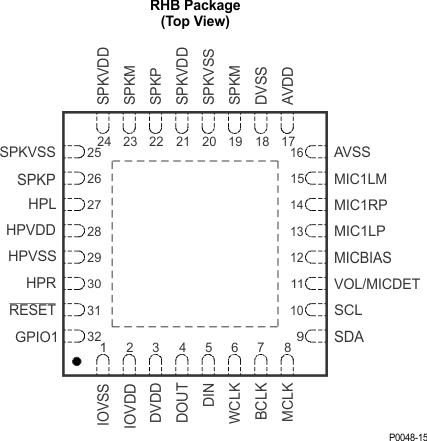
4.1 Pin Attributes
Table 4-1 Pin Functions
| PIN | I/O | DESCRIPTION | |
|---|---|---|---|
| NAME | NO. | ||
| AVDD | 17 | - | Analog power supply |
| AVSS | 16 | - | Analog ground |
| BCLK | 7 | I/O | Audio serial bit clock |
| DIN | 5 | I | Audio serial data input |
| DOUT | 4 | O | Audio serial data output |
| DVDD | 3 | - | Digital power – digital core |
| DVSS | 18 | - | Digital ground |
| GPIO1 | 32 | I/O | General-purpose input/output pin and multifunction pin |
| HPL | 27 | O | Left-channel headphone/line driver output |
| HPR | 30 | O | Right-channel headphone/line driver output |
| HPVDD | 28 | - | Headphone/line driver and PLL power |
| HPVSS | 29 | - | Headphone/line driver and PLL ground |
| IOVDD | 2 | - | Interface power |
| IOVSS | 1 | - | Interface ground |
| MCLK | 8 | I | External master clock |
| MICBIAS | 12 | O | Microphone bias voltage |
| MIC1LM | 15 | I | Microphone and line input routed to M or P input mixer |
| MIC1LP | 13 | I | Microphone and line input routed to P input mixer and left output mixer |
| MIC1RP | 14 | I | Microphone and line input routed to P input mixer and left and right output mixer |
| RESET | 31 | I | Device reset |
| SCL | 10 | I/O | I2C control bus clock input |
| SDA | 9 | I/O | I2C control-bus data input |
| SPKM | 19, 23 | Class-D speaker driver inverting output | |
| SPKP | 22, 26 | Class-D speaker driver noninverting output | |
| SPKVDD | 21 | Class-D speaker driver power supply | |
| SPKVSS | 20 | Class-D speaker driver power supply ground | |
| SPKVDD | 24 | Class-D speaker driver power supply | |
| SPKVSS | 25 | Class-D speaker driver power supply ground | |
| VOL/MICDET | 11 | I | Volume control or microphone, headphone, or headset detection |
| WCLK | 6 | I/O | Audio serial word clock |
5 Specifications
5.1 Absolute Maximum Ratings
over operating free-air temperature range (unless otherwise noted) (1)| MIN | MAX | UNIT | ||
|---|---|---|---|---|
| AVDD to AVSS | –0.3 | 3.9 | V | |
| DVDD to DVSS | –0.3 | 2.5 | V | |
| HPVDD to HPVSS | –0.3 | 3.9 | V | |
| SPKVDD to SPKVSS | –0.3 | 6 | V | |
| IOVDD to IOVSS | –0.3 | 3.9 | V | |
| Digital input voltage | IOVSS – 0.3 | IOVDD + 0.3 | V | |
| Analog input voltage | AVSS – 0.3 | AVDD + 0.3 | V | |
| Operating temperature | –40 | 85 | °C | |
| Junction temperature (TJ Max) | 105 | °C | ||
| Storage temperature, Tstg | –55 | 150 | °C | |
5.2 ESD Ratings
| VALUE | UNIT | |||
|---|---|---|---|---|
| V(ESD) | Electrostatic discharge | Human-body model (HBM), per ANSI/ESDA/JEDEC JS-001(1) | ±2000 | V |
| Charged-device model (CDM), per JEDEC specification JESD22-C101(2) | ±1000 | |||
5.3 Recommended Operating Conditions
over operating free-air temperature range (unless otherwise noted)| MIN | NOM | MAX | UNIT | |||
|---|---|---|---|---|---|---|
| AVDD(2) | Power-supply voltage | Referenced to AVSS(1) | 2.7 | 3.3 | 3.6 | V |
| DVDD | Referenced to DVSS(1) | 1.65 | 1.8 | 1.95 | ||
| HPVDD | Referenced to HPVSS(1) | 2.7 | 3.3 | 3.6 | ||
| SPKVDD(2) | Referenced to SPKVSS(1) | 2.7 | 5.5 | |||
| IOVDD | Referenced to IOVSS(1) | 1.1 | 3.3 | 3.6 | ||
| Speaker impedance | Resistance applied across class-D ouput pins (BTL) | 4 | Ω | |||
| Headphone impedance | AC coupled to RL | 16 | Ω | |||
| VI | Analog audio full-scale input voltage | AVDD = 3.3 V, single-ended | 0.707 | VRMS | ||
| Stereo line output load impedance | AC coupled to RL | 10 | kΩ | |||
| MCLK(3) | Master clock frequency | IOVDD = 3.3 V | 50 | MHz | ||
| fSCL | SCL clock frequency | 400 | kHz | |||
| TA | Operating free-air temperature | –40 | 85 | °C | ||
5.4 Thermal Information
| THERMAL METRIC(1) | TLV320AIC3100 | UNIT | ||
|---|---|---|---|---|
| RHB (VQFN) | ||||
| 32 PINS | ||||
| RθJA | Junction-to-ambient thermal resistance | With thermal pad soldered to board | 31.9 | °C/W |
| RθJC(top) | Junction-to-case (top) thermal resistance | 22.6 | °C/W | |
| RθJB | Junction-to-board thermal resistance | 6 | °C/W | |
| ψJT | Junction-to-top characterization parameter | 0.2 | °C/W | |
| ψJB | Junction-to-board characterization parameter | 6 | °C/W | |
| RθJC(bot) | Junction-to-case (bottom) thermal resistance | 1.3 | °C/W | |
5.5 Electrical Characteristics
At 25°C, AVDD = HPVDD = IOVDD = 3.3 V, SPKVDD = 3.6 V, DVDD = 1.8 V, fS (audio) = 48 kHz, CODEC_CLKIN = 256 × fS, PLL = Off, VOL/MICDET pin disabled (unless otherwise noted)| PARAMETER | TEST CONDITIONS | MIN | TYP | MAX | UNIT | |
|---|---|---|---|---|---|---|
| INTERNAL OSCILLATOR-RC_CLK | ||||||
| Oscillator frequency | 8.2 | MHz | ||||
| VOLUME CONTROL PIN (ADC); VOL/MICDET pin enabled | ||||||
| Input voltage range | VOL/MICDET pin configured as volume control (page 0 / register 116, bit D7 = 1 and page 0 / register 67, bit D7 = 0) | 0 | 0.5 × AVDD | V | ||
| Input capacitance | 2 | pF | ||||
| Volume control steps | 128 | Steps | ||||
| AUDIO ADC | ||||||
| Microphone Input to ADC, 984-Hz Sine-Wave Input, fS = 48 kHz, AGC = OFF | ||||||
| Input signal level (0-dB) | MIC with R1 = 20 kΩ (page 1 / register 48 and page 1 / register 49, bits D7-D6) | 0.707 | VRMS | |||
| SNR | Signal-to-noise ratio | fS = 48 kHz, 0-dB PGA gain, MIC input ac-shorted to ground; measured as idle-channel noise, A-weighted(1) (2) | 80 | 91 | dB | |
| Dynamic range | fS = 48 kHz, 0-dB PGA gain, MIC input 1 kHz at –60-dBFS input applied, referenced to 0.707-VRMS input, A-weighted(1) (2) | 91 | dB | |||
| THD+N | Total harmonic distortion + noise | fS = 48 kHz, 0-dB PGA gain, MIC input 1 kHz at –2 dBFS input applied, referenced to 0.707-VRMS input | –85 | –70 | dB | |
| THD | Total harmonic distortion | fS = 48 kHz, 0-dB PGA gain, MIC input 1 kHz at –2 dBFS input applied, referenced to 0.707-VRMS input | –91 | dB | ||
| Input capacitance | MIC input | 2 | pF | |||
| Microphone Bias | ||||||
| Voltage output | Page 1 / register 46, bits D1–D0 = 10 | 2.25 | 2.5 | 2.75 | V | |
| Page 1 / register 46, bits D1–D0 = 01 | 2 | |||||
| Voltage regulation | At 4-mA load current, page 1 / register 46, bits D1–D0 = 10 (MICBIAS = 2.5 V) | 5 | mV | |||
| At 4-mA load current, page 1 / register 46, bits D1–D0 = 01 (MICBIAS = 2 V) | 7 | |||||
| Audio ADC Digital Decimation Filter Characteristics | ||||||
| See Section 7.3.9.4.4 for audio ADC decimation filter characteristics. | ||||||
| DAC HEADPHONE OUTPUT, AC-coupled load = 16 Ω (single-ended), driver gain = 0 dB, parasitic capacitance = 30 pF | ||||||
| Full-scale output voltage (0 dB) | Output common-mode setting = 1.65 V | 0.707 | VRMS | |||
| SNR | Signal-to-noise ratio | Measured as idle-channel noise, A-weighted(1) (2) | 80 | 95 | dB | |
| THD | Total harmonic distortion | 0-dBFS input | –85 | –65 | dB | |
| THD+N | Total harmonic distortion + noise | 0-dBFS input | –82 | –60 | dB | |
| Mute attenuation | 87 | dB | ||||
| PSRR | Power-supply rejection ratio(4) | Ripple on HPVDD (3.3 V) = 200 mVp-p at 1 kHz | –62 | dB | ||
| PO | Maximum output power | RL = 32 Ω, THD+N = –60 dB | 20 | mW | ||
| RL = 16 Ω, THD+N = –60 dB | 60 | |||||
| DAC LINEOUT (HP Driver in Lineout Mode) | ||||||
| SNR | Signal-to-noise ratio | Measured as idle-channel noise, A-weighted | 95 | dB | ||
| THD | Total harmonic distortion | 0-dBFS input, 0-dB gain | –86 | dB | ||
| THD+N | Total harmonic distortion + noise | 0-dBFS input, 0-dB gain | –83 | dB | ||
| DAC Digital Interpolation Filter Characteristics | ||||||
| See Section 7.3.10.1.4 for DAC interpolation filter characteristics. | ||||||
| DAC OUTPUT to CLASS-D SPEAKER OUTPUT; Load = 4 Ω (differential), 50 pF | ||||||
| Output voltage | SPKVDD 3.6 V, BTL measurement, CM = 1.8 V, DAC input = 0 dBFS, class-D gain = 6 dB, THD = –16.5 dB | 2.2 | VRMS | |||
| SPKVDD = 3.6 V, BTL measurement, CM = 1.8 V, DAC input = –2 dBFS, class-D gain = 6 dB, THD = –20 dB | 2.1 | |||||
| Output, common-mode | SPKVDD = 3.6 V, BTL measurement, DAC input = mute, class-D gain = 6 dB | 1.8 | V | |||
| SNR | Signal-to-noise ratio | SPKVDD = 3.6 V, BTL measurement, class-D gain = 6 dB, measured as idle-channel noise, A-weighted (with respect to full-scale output value of 2.3 VRMS)(1) (2) | 88 | dB | ||
| THD | Total harmonic distortion | SPKVDD = 3.6 V, BTL measurement, CM = 1.8 V, DAC input = –6 dBFS, class-D gain = 6 dB | –65 | dB | ||
| THD+N | Total harmonic distortion + noise | SPKVDD = 3.6 V, BTL measurement, CM = 1.8V, DAC input = –6 dBFS, class-D gain = 6dB | –63 | dB | ||
| PSRR | Power-supply rejection ratio(3) | SPKVDD = 3.6 V, BTL measurement, ripple on SPKVDD = 200 mVp-p at 1 kHz | –44 | dB | ||
| Mute attenuation | 110 | dB | ||||
| PO | Maximum output power | SPKVDD = 3.6 V, BTL measurement, CM = 1.8 V, class-D gain = 18 dB, THD = 10% | 1 | W | ||
| SPKVDD = 4.3 V, BTL measurement, CM = 1.8 V, class-D gain = 18 dB, THD = 10% | 1.5 | W | ||||
| SPKVDD = 5.5 V, BTL measurement, CM = 1.8 V, class-D gain = 18 dB, THD = 10% | 2.5 | W | ||||
| DAC OUTPUT to CLASS-D SPEAKER OUTPUT; Load = 8 Ω (differential), 50 pF | ||||||
| Output voltage | SPKVDD 3.6 V, BTL measurement, CM = 1.8 V, DAC input = 0 dBFS, class-D gain = 6 dB, THD = –16.5 dB | 2.2 | VRMS | |||
| SPKVDD = 3.6 V, BTL measurement, CM = 1.8 V, DAC input = –2 dBFS, class-D gain = 6 dB, THD = –20 dB | 2.1 | VRMS | ||||
| Output, common-mode | SPKVDD = 3.6 V, BTL measurement, DAC input = mute, class-D gain = 6 dB | 1.8 | V | |||
| SNR | Signal-to-noise ratio | SPKVDD = 3.6 V, BTL measurement, class-D gain = 6 dB, measured as idle-channel noise, A-weighted (with respect to full-scale output value of 2.3 VRMS) | 89 | dB | ||
| THD | Total harmonic distortion | SPKVDD = 3.6 V, BTL measurement, CM = 1.8 V, DAC input = –6 dBFS, class-D gain = 6 dB | –67 | dB | ||
| THD+N | Total harmonic distortion + noise | SPKVDD = 3.6 V, BTL measurement, CM = 1.8 V, DAC input = –6 dBFS, class-D gain = 6dB | –66 | dB | ||
| PSRR | Power-supply rejection ratio(3) | SPKVDD = 3.6 V, BTL measurement, ripple on SPKVDD = 200 mVp-p at 1 kHz | –44 | dB | ||
| Mute attenuation | 110 | dB | ||||
| PO | Maximum output power | SPKVDD = 3.6 V, BTL measurement, CM = 1.8 V, class-D gain = 18 dB, THD = 10% | 0.7 | W | ||
| SPKVDD = 4.3 V, BTL measurement, CM = 1.8 V, class-D gain = 18 dB, THD = 10% | 1 | |||||
| SPKVDD = 5.5 V, BTL measurement, CM = 1.8 V, class-D gain = 18 dB, THD = 10% | 1.6 | |||||
| Output-stage leakage current for direct battery connection | SPKVDD = 4.3 V, device is powered down (power-up-reset condition) | 80 | nA | |||
| DAC POWER CONSUMPTION | ||||||
| DAC power consumption is based on selected processing block, see Section 7.3.8. | ||||||
| DIGITAL INPUT AND OUTPUT | ||||||
| Logic family | CMOS | |||||
| VIH | Logic Level | IIH = 5 µA, IOVDD ≥ 1.6 V | 0.7 × IOVDD | V | ||
| IIH = 5 µA, IOVDD < 1.6 V | IOVDD | |||||
| VIL | IIL = 5 µA, IOVDD ≥ 1.6 V | –0.3 | 0.3 × IOVDD | |||
| IIL = 5 µA, IOVDD < 1.6 V | 0 | |||||
| VOH | IOH = 2 TTL loads | 0.8 × IOVDD | ||||
| VOL | IOL = 2 TTL loads | 0.1 × IOVDD | ||||
| Capacitive load | 10 | pF | ||||
5.6 Power Dissipation Ratings(1)
This data was taken using 2-oz. (0,071-mm thick) trace and copper pad that is soldered to a JEDEC high-K, standard 4-layer 3-inch × 3-inch (7,62-cm × 7,62-cm) PCB.| Power Rating at 25°C | Derating Factor | Power Rating at 70°C | Power Rating at 85°C |
|---|---|---|---|
| 2.3 W | 28.57 mW/°C | 1 W | 0.6 W |
5.7 I2S, LJF, and RJF Timing in Master Mode
All specifications at 25°C, DVDD = 1.8 V. Note: All timing specifications are measured at characterization but not tested at final test. See Figure 5-1.| PARAMETER | IOVDD = 1.1 V | IOVDD = 3.3 V | UNIT | |||
|---|---|---|---|---|---|---|
| MIN | MAX | MIN | MAX | |||
| td(WS) | WCLK delay | 45 | 20 | ns | ||
| td(DO-WS) | WCLK to DOUT delay (for LJF mode only) | 45 | 20 | ns | ||
| td(DO-BCLK) | BCLK to DOUT delay | 45 | 20 | ns | ||
| ts(DI) | DIN setup | 8 | 6 | ns | ||
| th(DI) | DIN hold | 8 | 6 | ns | ||
| tr | Rise time | 25 | 10 | ns | ||
| tf | Fall time | 25 | 10 | ns | ||
5.8 I2S, LJF, and RJF Timing in Slave Mode
All specifications at 25°C, DVDD = 1.8 V. Note: All timing specifications are measured at characterization but not tested at final test. See Figure 5-2.| PARAMETER | IOVDD = 1.1 V | IOVDD = 3.3 V | UNIT | |||
|---|---|---|---|---|---|---|
| MIN | MAX | MIN | MAX | |||
| tH(BCLK) | BCLK high period | 35 | 35 | ns | ||
| tL(BCLK) | BCLK low period | 35 | 35 | ns | ||
| ts(WS) | WCLK setup | 8 | 6 | ns | ||
| th(WS) | WCLK hold | 8 | 6 | ns | ||
| td(DO-WS) | WCLK to DOUT delay (for LJF mode only) | 45 | 20 | ns | ||
| td(DO-BCLK) | BCLK to DOUT delay | 45 | 20 | ns | ||
| ts(DI) | DIN setup | 8 | 6 | ns | ||
| th(DI) | DIN hold | 8 | 6 | ns | ||
| tr | Rise time | 4 | 4 | ns | ||
| tf | Fall time | 4 | 4 | ns | ||
5.9 DSP Timing in Master Mode
All specifications at 25°C, DVDD = 1.8 V. Note: All timing specifications are measured at characterization but not tested at final test. See Figure 5-3.| PARAMETER | IOVDD = 1.1 V | IOVDD = 3.3 V | UNIT | |||
|---|---|---|---|---|---|---|
| MIN | MAX | MIN | MAX | |||
| td(WS) | WCLK delay | 45 | 20 | ns | ||
| td(DO-BCLK) | BCLK to DOUT delay | 45 | 20 | ns | ||
| ts(DI) | DIN setup | 8 | 8 | ns | ||
| th(DI) | DIN hold | 8 | 8 | ns | ||
| tr | Rise time | 25 | 10 | ns | ||
| tf | Fall time | 25 | 10 | ns | ||
5.10 DSP Timing in Slave Mode
All specifications at 25°C, DVDD = 1.8 V. Note: All timing specifications are measured at characterization but not tested at final test. See Figure 5-4.| PARAMETER | IOVDD = 1.1 V | IOVDD = 3.3 V | UNIT | |||
|---|---|---|---|---|---|---|
| MIN | MAX | MIN | MAX | |||
| tH(BCLK) | BCLK high period | 35 | 35 | ns | ||
| tL(BCLK) | BCLK low period | 35 | 35 | ns | ||
| ts(WS) | WCLK setup | 8 | 8 | ns | ||
| th(WS) | WCLK hold | 8 | 8 | ns | ||
| td(DO-BCLK) | BCLK to DOUT delay | 45 | 20 | ns | ||
| ts(DI) | DIN setup | 8 | 8 | ns | ||
| th(DI) | DIN hold | 8 | 8 | ns | ||
| tr | Rise time | 4 | 4 | ns | ||
| tf | Fall time | 4 | 4 | ns | ||
5.11 I2C Interface Timing
All specifications at 25°C, DVDD = 1.8 V. Note: All timing specifications are measured at characterization but not tested at final test.See Figure 5-5.| PARAMETER | Standard Mode | Fast Mode | UNIT | |||||
|---|---|---|---|---|---|---|---|---|
| MIN | TYP | MAX | MIN | TYP | MAX | |||
| fSCL | SCL clock frequency | 0 | 100 | 0 | 400 | kHz | ||
| tHD;STA | Hold time (repeated) START condition. After this period, the first clock pulse is generated. | 4 | 0.8 | μs | ||||
| tLOW | LOW period of the SCL clock | 4.7 | 1.3 | μs | ||||
| tHIGH | HIGH period of the SCL clock | 4 | 0.6 | μs | ||||
| tSU;STA | Setup time for a repeated START condition | 4.7 | 0.8 | μs | ||||
| tHD;DAT | Data hold time: for I2C bus devices | 0 | 3.45 | 0 | 0.9 | μs | ||
| tSU;DAT | Data set-up time | 250 | 100 | ns | ||||
| tr | SDA and SCL rise time | 1000 | 20 + 0.1Cb | 300 | ns | |||
| tf | SDA and SCL fall time | 300 | 20 + 0.1Cb | 300 | ns | |||
| tSU;STO | Set-up time for STOP condition | 4 | 0.8 | μs | ||||
| tBUF | Bus free time between a STOP and START condition | 4.7 | 1.3 | μs | ||||
| Cb | Capacitive load for each bus line | 400 | 400 | pF | ||||
 Figure 5-1 I2S/LJF/RJF Timing in Master Mode
Figure 5-1 I2S/LJF/RJF Timing in Master Mode
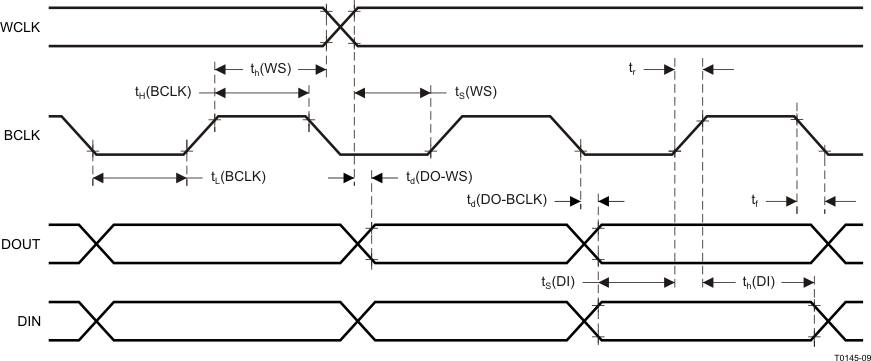 Figure 5-2 I2S/LJF/RJF Timing in Slave Mode
Figure 5-2 I2S/LJF/RJF Timing in Slave Mode
 Figure 5-3 DSP Timing in Master Mode
Figure 5-3 DSP Timing in Master Mode
 Figure 5-4 DSP Timing in Slave Mode
Figure 5-4 DSP Timing in Slave Mode
 Figure 5-5 I2C Interface Timing Diagram
Figure 5-5 I2C Interface Timing Diagram
5.12 Typical Characteristics
5.12.1 Audio ADC Performance
 Figure 5-6 Amplitude vs Frequency
Figure 5-6 Amplitude vs FrequencyFFT – ADC Idle Channel Differential
Added Text for Spacing
 Figure 5-8 Amplitude vs Frequency
Figure 5-8 Amplitude vs FrequencyFFT – ADC Differential Input
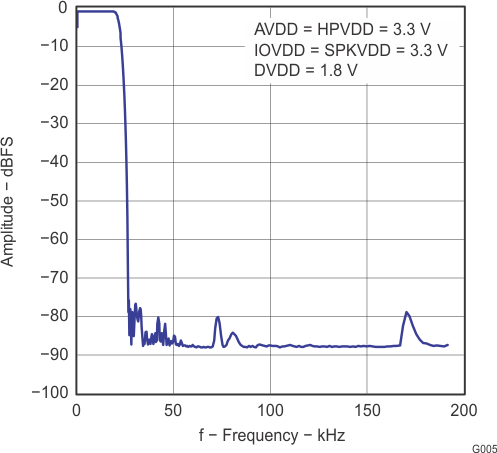 Figure 5-10 Amplitude vs Frequency
Figure 5-10 Amplitude vs FrequencyFrequency Response, Audio ADC Channel
 Figure 5-7 Amplitude vs Frequency
Figure 5-7 Amplitude vs FrequencyFFT – ADC Single-Ended Input
 Figure 5-9 Amplitude vs Frequency
Figure 5-9 Amplitude vs FrequencyFFT – ADC Idle Channel, Single-Ended
 Figure 5-11 SNR vs PGA Channel Gain
Figure 5-11 SNR vs PGA Channel Gain
5.12.2 DAC Performance
 Figure 5-12 Amplitude vs Frequency
Figure 5-12 Amplitude vs FrequencyFFT - DAC to Line Output
TEXT ADDED FOR SPACING
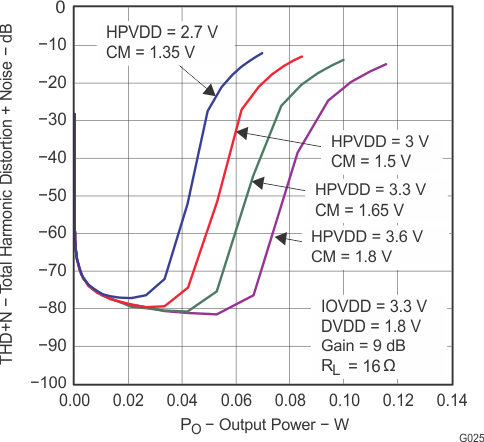 Figure 5-14 Total Harmonic Distortion + Noise vs Output Power
Figure 5-14 Total Harmonic Distortion + Noise vs Output PowerHeadphone Output Power
 Figure 5-13 Amplitude vs Frequency
Figure 5-13 Amplitude vs FrequencyFFT - DAC to Headphone Output
TEXT ADDED FOR SPACING
5.12.3 Class-D Speaker Driver Performance
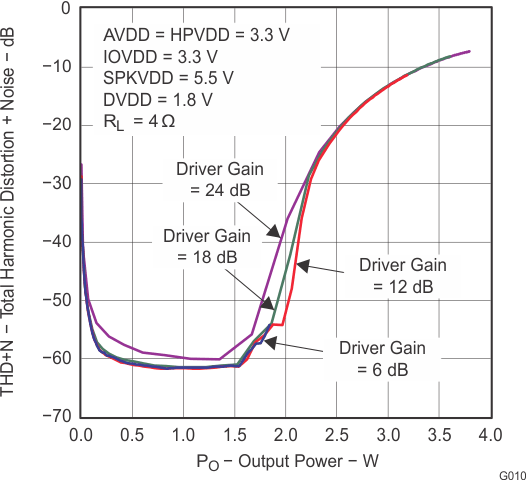 Figure 5-15 Total Harmonic Distortion + Noise vs Output Power
Figure 5-15 Total Harmonic Distortion + Noise vs Output PowerMax Class-D Speaker-Driver Output Power (RL = 4 Ω)
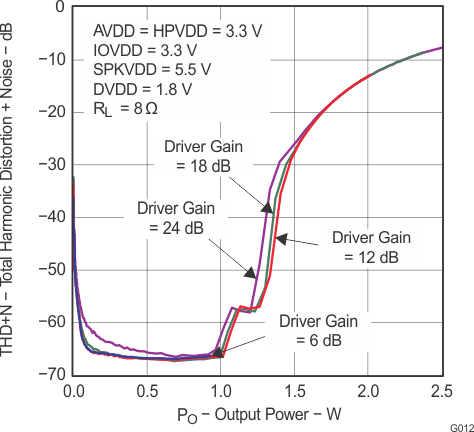 Figure 5-17 Total Harmonic Distortion + Noise vs Output Power
Figure 5-17 Total Harmonic Distortion + Noise vs Output PowerMax Class-D Speaker-Driver Output Power (RL = 8 Ω)
 Figure 5-16 Total Harmonic Distortion + Noise vs Output Power
Figure 5-16 Total Harmonic Distortion + Noise vs Output PowerClass-D Speaker-Driver Output Power (RL = 4 Ω)
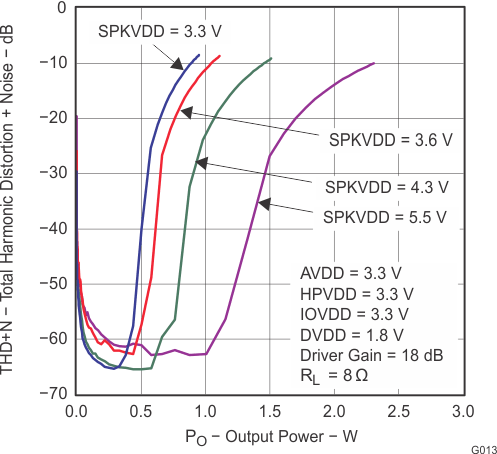 Figure 5-18 Total Harmonic Distortion + Noise vs Output Power
Figure 5-18 Total Harmonic Distortion + Noise vs Output PowerClass-D Speaker-Driver Output Power (RL = 8 Ω)
5.12.4 Analog Bypass Performance
H
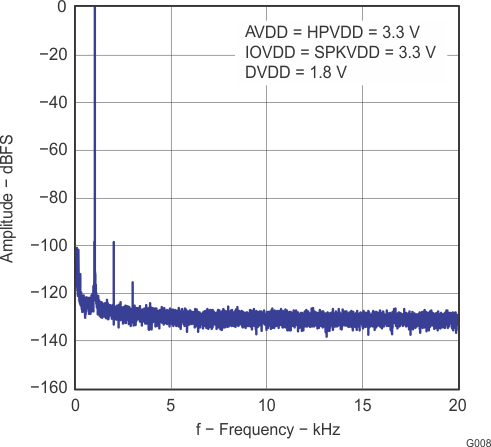 Figure 5-19 Amplitude vs Frequency
Figure 5-19 Amplitude vs FrequencyFFT - Line-In Bypass to Line Output
 Figure 5-20 Amplitude vs Frequency
Figure 5-20 Amplitude vs FrequencyFFT - Line-In Bypass to Headphone Output
5.12.5 MICBIAS Performance
H
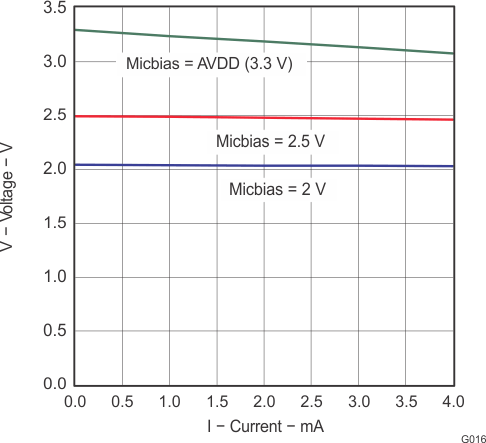 Figure 5-21 Voltage vs Current
Figure 5-21 Voltage vs CurrentMICBIAS